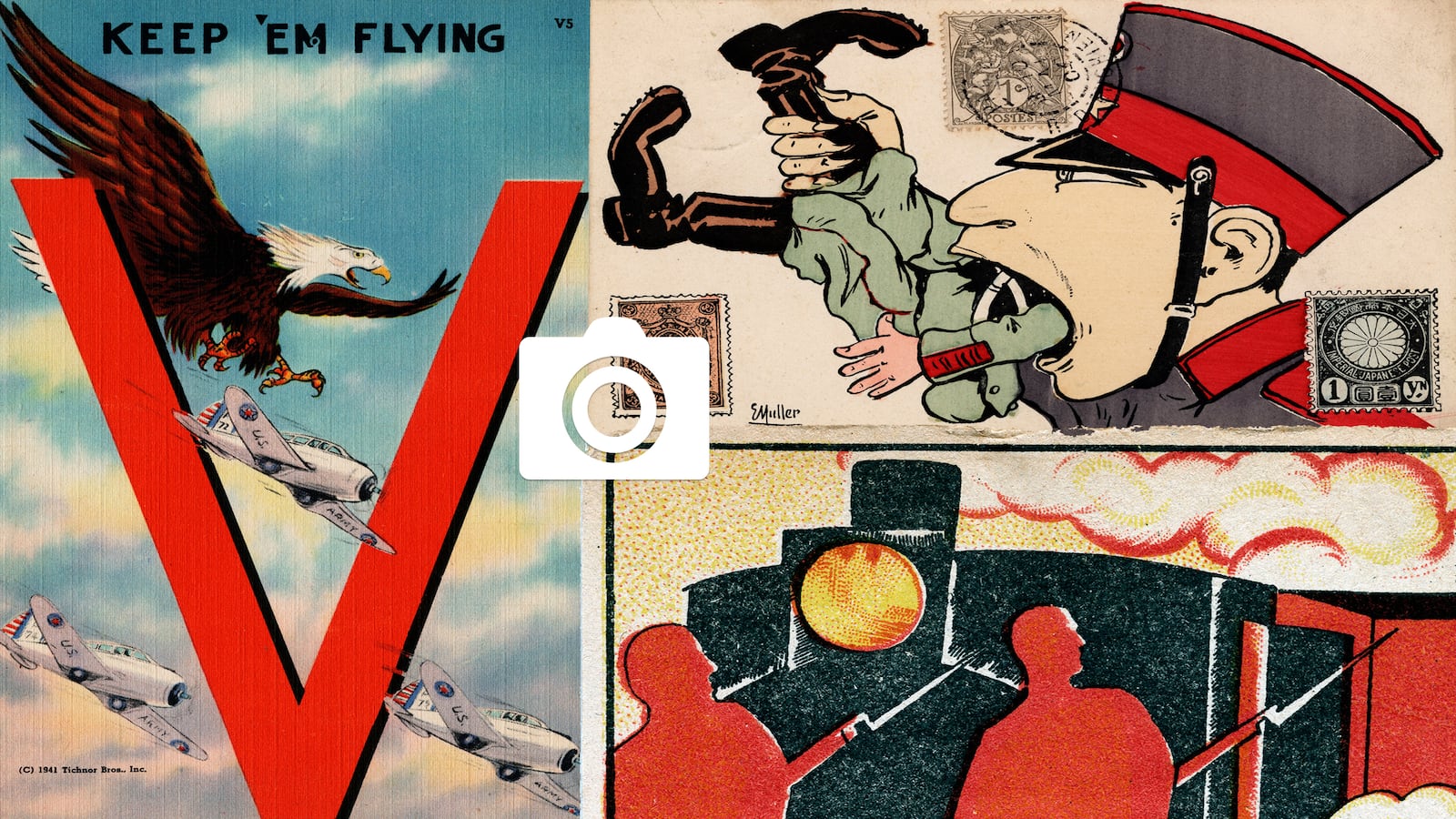During its peak in the 20th century, the postcard was everywhere. It was widely considered a popular and accessible medium that was progressive for its time period. It was primarily used as a collectable item that magnified the pressing political and social prejudices of the era.
In 1870, the Museum of Fine Arts, Boston was founded to serve audiences around the world with art that challenged the thought of imagination. In 2010, it became the residence to the Leonard A. Lauder Postcard Archive. The archive handled the study of the commerce, distribution, and development of the images. In addition, the archive manifests the narrative perpetuated by the medium itself, and the complications of art during both world wars and the years between.
The Propaganda Front depicts examples of the relationship between art, politics, and propaganda. The imagery raises questions on the role of mass media during this period and the social and political effects these images had on the public. These postcards hold timeless moments of history and showcase the complexities and mastery of graphic design. The following postcard images include universal messages that highlight the preconceptions of its time that can resonate both politically and socially today.
For more information: click here

Japanese Soldier Devours the Russian Enemy Color lithograph on card stock
Leonard A. Lauder Postcard Archive-- Promised gift of Leonard A. Lauder Courtesy of Museum of Fine Arts, Boston
Keep 'Em Flying [V with American eagle and fighting jets] (English caption) Color lithograph on card stock
Leonard A. Lauder Postcard Archive-- Promised gift of Leonard A. Lauder Courtesy of Museum of Fine Arts, Boston
The southern Manchuria Railway train greeted by children weaving national flags Color lithograph on card stock
Leonard A. Lauder Postcard Archive-- Promised gift of Leonard A. Lauder Courtesy of Museum of Fine Arts, Boston
Bandits, Get out of the way! (Russian caption) [silhoueted Russian soldiers in front of train] Color lithograph on card stock
Leonard A. Lauder Postcard Archive-- Promised gift of Leonard A. Lauder Courtesy of Museum of Fine Arts, Boston
The Hercules of 1914 (pop up card; oversized) Color lithograph on card stock
Leonard A. Lauder Postcard Archive-- Promised gift of Leonard A. Lauder Courtesy of Museum of Fine Arts, Boston
To the abundant, intelligent, and extensive use of the sun, fresh air, and water, from the series RSI Moscow Spartakiada, 1928 Gustave Gustavovich Klutsis (Russian (born in Latvia), 1895-1944) 1928 Lithograph on card stock
Leonard A. Lauder Postcard Archive-- Promised gift of Leonard A. Lauder Courtesy of Museum of Fine Arts, Boston
No room for RUMORS (English caption) Color lithograph on card stock
Leonard A. Lauder Postcard Archive-- Promised gift of Leonard A. Lauder Courtesy of Museum of Fine Arts, Boston
In our collective farm there is no place for popes and kulaks (Russian caption) [peasant woman with rake holds off clamoring figures] Color lithograph on card stock
Leonard A. Lauder Postcard Archive-- Promised gift of Leonard A. Lauder Courtesy of Museum of Fine Arts, Boston
Santa Claus (fake) Hunger War (German caption) [Hitler dressed as a Santa] Color lithograph on card stock
Leonard A. Lauder Postcard Archive-- Promised gift of Leonard A. Lauder Courtesy of Museum of Fine Arts, Boston
German eagle attacks English lion holding on to British flag Color lithograph on card stock
Leonard A. Lauder Postcard Archive-- Promised gift of Leonard A. Lauder Courtesy of Museum of Fine Arts, Boston





